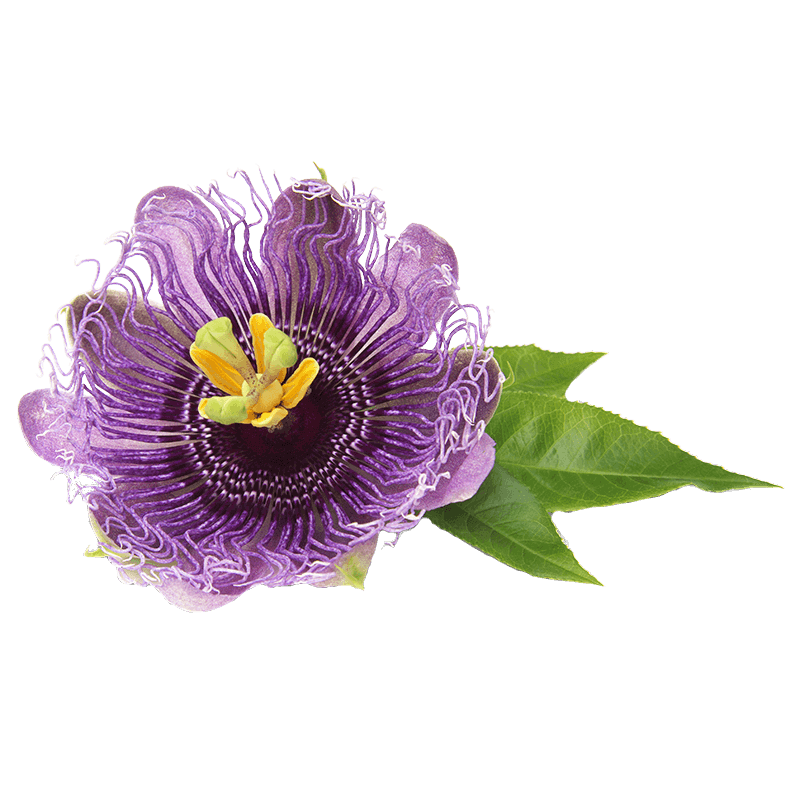Latin name
Passiflora incarnata L.
Origin
The South East of the United States and Mexico.
Used part
The aerial parts.
Active components
Flavonoids (apigenin, chrysin): have an anxiolytic, sedative and hypnotic effect.
Usage
The dried aerial parts of passionflower have a long tradition of use among Native Americans for digestive complaints caused by nervousness, agitation and hypertension. Recent research demonstrates that it helps to calm agitation and aids relaxation. 1-8, However, it can also be used to promote healthy sleep. 9,10

